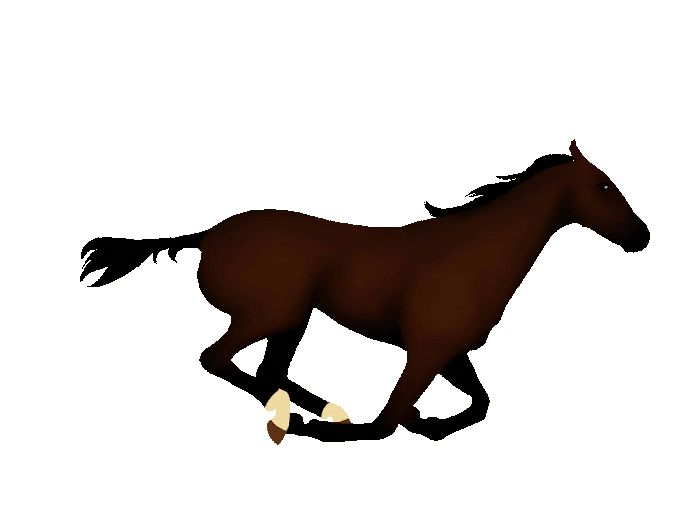HANDICAPPING NOTES : WHAT MAKES A FALSE FAVORITE
By E.J. Minnis
What makes a false favourite?
THOSE SHONKY HOTPOTS!
I often get asked questions about racing, not only on the punting side of the sport but also in a broader sense as well. Here is a selection of recent questions and answers.
Wayne Barker of Sydney asks:
Mention is often made of media hype leading to a horse being a false favourite (or at least one which is poor value) and the amount of 'mug money' which is bet on such horses. My question is, then, what do you believe leads to a horse being favourite (apart from the obvious weight of money)? Is it a consensus of rating experts, media hype, or inside information from the stable or other connections?
I ask your opinion because it would appear that if the question of value is put aside, there is more than just media hype or mug money involved here. Favourites, being the market top-rated, have an approximate 30 per cent strike rate when all races are considered. Given their relatively high strike rate, what makes a poor false favourite
Answer: Those who work in the print media face a difficult task and often have to make their selections up to 48 hours before the races are run. In some instances, they have very little time - after the final fields are known - to advise their publishers of their selections. That's one of the main reasons why very few tipsters, if any, can show a level-stakes profit in the long run, let alone sustain those profits.
These tipsters, along with those on radio and television, do have a following, and that following impacts on the betting markets. High-profile media personalities, such as Max Presnell, Ken Callender and Bryan Martin, influence the betting markets with their selections.
Such is the weight of money accumulated by the numbers of small bets made when high-profile media personalities declare one of their selections a 'best bet', it is very likely that such a selection will open up as the market favourite in the tote markets, which in turn is often reflected in the bookmakers' opening markets as well.
This type of situation leads to false favourites, which will often change as race time approaches and wiser (betting) heads prevail. Of course, if the media tipster's selections are also genuine favourites, they may drift in the market, but retain their favouritism.
Another reason why horses can become false favourites is an over assessment of their known or assumed ability, particularly with lightly-raced or un-raced horses.
Sometimes a horse is well backed because of stable confidence, with connections having taken the early market prices available in Darwin and elsewhere. When this occurs, some of this money is fed back through the betting rings across Australia, often leading to on-track plunges that may or may not come off.
An analysis of how favourites performed 10, 20, 30 or even 50 years ago, would reveal similar strike rates as today; nothing much has changed in this regard. This is despite major changes that have occurred within the racing industry.
If 30 per cent of favourites win and those that do are considered to be 'true' favourites that leaves an awful lot of favourites that lose. Are all those losers 'false' favourites? I doubt it because other factors come into play and many favourites (as well as other runners) are simply good things beaten.
To achieve a break-even point if every favourite was backed, a price of 9/4 ($3.25) would have to be obtained. The average price of favourites is 15/8 ($2.88), which creates something of a shortfall.
Finally, the following are some of the factors that constitute why a horse may be a poor-value favourite, but not necessarily a false favourite:
Horses with poor win-strike rates;
Horses living on past reputations; Media hype horses; or Horses with a proven record of failure at track and/or distance.
Jim Nixon from Victoria asks:
I often see references to class/weight ratings, but do not understand what they are or how to use them. The books mentioned (those by Don Scott and Rein Plante) are unavailable. Is there a reference somewhere that explains what these are and gives a detailed rundown of how they are used? I have several books by Andrew Beyer and his information on speed ratings is quite interesting though more difficult to apply.
Answer: If you can get a copy of either, the Scott and Plante books are worth reading. They do, however, require some time and effort on behalf of the reader in understanding the principles involved.
There is another more recent book on Australian racing, one I would recommend to anyone wanting to obtain an understanding of class, weight and the principles of ratings. The book in question is Australian Horse Racing - The Punter's Guide to Winning, by Paul Segar, a Melbourne-based professional punter.
It will take you from go to whoa, explaining in a detailed but simplified way the nuances of Australian racing. The beauty of this book is that at the end of each chapter there is a series of small exercises for readers to self-test themselves on their understanding of what they have just read. Highly recommended for anyone relatively new to the racing game.
Brett Johnson of Adelaide asks:
What are your thoughts on horses backing tip after a break longer than twenty-one days where the horse has no record of doing so before? When a horse is coming back in distance, what is a safe drop in distance before they become a risk (even if they are proven at the distance)?
Answer: I much prefer horses to be backing up within fourteen days, as fitness is one of the major form factors. However, each horse has to be treated as an individual, so what suits one horse may not suit another.
Where a horse does not have a proven record of being able to backup longer than twenty-one days, then a cautious approach needs to be adopted. If the horse has a record of success only when off a short backup and failure otherwise, then it should be disregarded as a serious betting proposition.
As a general rule, horses coming back substantially in distance should be avoided, unless they have a proven record of doing so.
However, if a horse has been running quite successfully at, say, 1600m, then is tried out at 2000m and fails, immediately reverting back to 1600m at its next start, then it is a somewhat different situation, as the connections may have simply been trying the horse out at the longer distance, or chasing additional prizemoney.
On the other hand, if a horse has been racing at 1400m and 1600m for four or five runs during its current preparation then drops back to 1200m without having a let-up or freshen-up, this is a very negative form indicator unless there is proof otherwise. Normally in such circumstances, horses will lack the necessary early speed to be competitive in 1200m sprint races.
Some general guidelines are that for horses running in middle distance and distance races (1600mplus), a drop back in distance of more than 400m would be considered negative; in races less than 1600m a drop back of more than 200m likewise, while in short sprint races of 1000m and 1100m, a drop back of anything longer than 100m is another negative.
Finally, the drop-back in distance would, to a degree, be dependent on how many runs back from a spell a horse has had, with the capability to drop-back being more likely early, rather than late, into the preparation.
Now a question on the new race classes recently introduced into Sydney racing from Mark Vladimir of Queensland, who asks:
Could you please decode the following race class abbreviations recently introduced into Sydney racing and explain where they stand in the hierarchy of race classifications? Sc0 Win;
Sc0 Win-LY, Sc1 Win-LY and Transition Handicap?
Answer: The new race classes now being run in Sydney and New South Wales have been introduced in an attempt to sort out a number of long-standing issues in regard to programming and in particular the small field sizes in Sydney.
The 'Sc' stands for Special Condition, so races titled Sc0 Win are races for horses that have never won a Special Conditions race, or one of a higher class previously.
Races classified as Sc0 Win-LY are for horses that have not won a Special Conditions race, or one of a higher class, in the past twelve months or ten starts, while those classified as Sc1 Win-LY are for horses that have not won more than one such race, or a race of a higher class, in the past twelve months or ten starts.
To advise you of where these new race types stand in the hierarchy of racing, I went to those who should know best and sought the advice of the NSW Handicapping Panel. This is their response:
'The handicapping panel is envisaging the Sc1 Win-LY races will be handicapped around a similar level to the now extinct Rs2MW races. So the suggestion that they appear to be handicapped approximately 1kg lower is fairly accurate. On occasions they may be stronger, but the expectations are that they will be within 1kg strength-wise of the former Rs2MW's fairly consistently.
'We will be monitoring the strength of these races over the next six months and will make any necessary changes in due course. In terms of weights carried, if a horse had previously been carrying 57kg in an Rs2MW, he can expect similar treatment when entering a Set Win-LY, provided the horse is still eligible.
'The Sc0 Win is usually around 5kg inferior to the Sc1 Win-LY, sometimes more, but that would be the average. The Sc0 Win-LY would only be marginally stronger than the Sc0 Win, probably around 1kg. So it would normally be around 4kg inferior to the Se1 Win-LY. We are talking about 3yo-plus races, as the 3yo Sc races are again about 2kg inferior.
'With regard to Transitional Handicaps, (while) they are not necessarily replacing Class 6 handicaps, they are designed to give that (type of) horse an option.
'No Class 5 or 6 races will be programmed in NSW any more. They (Transitional) are actually Open Handicaps that will be handicapped around a Class 6 scale and are designed to compliment stronger Open Handicaps programmed around them and provide the weaker-type horse with an option. This will normally result in them being at least 4kg weaker and sometimes 5kg weaker than Open Handicaps.
'At Newcastle on a Saturday a Transitional will be approximately 6kg weaker than an Open Handicap at Hawkesbury run midweek and so on and so on. The distance races will be weaker overall than the sprint races, in all classes. Approximately 2kg is a good rule.'
So there you have it, straight from the horse's mouth, so to speak.




0 Comments